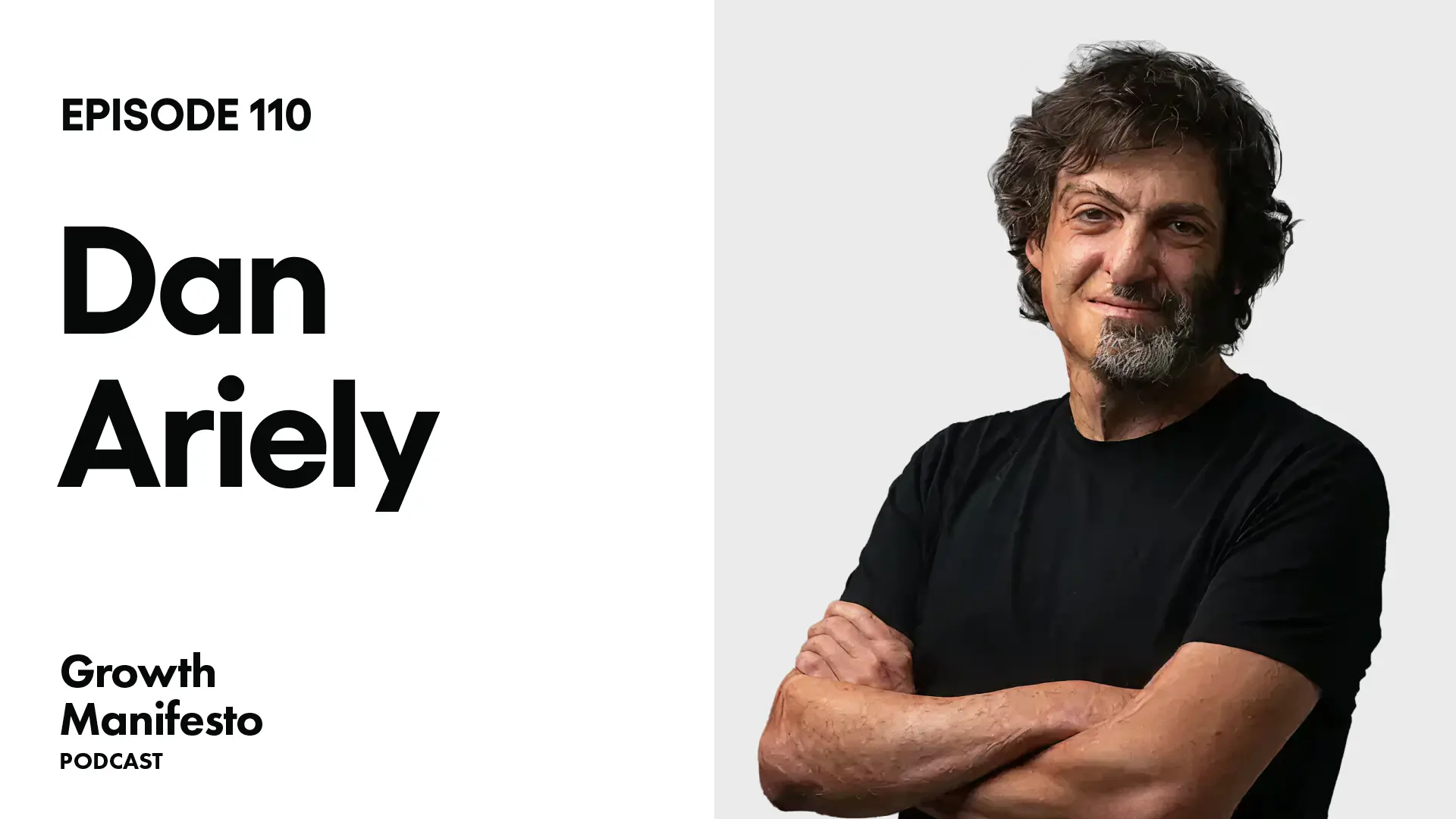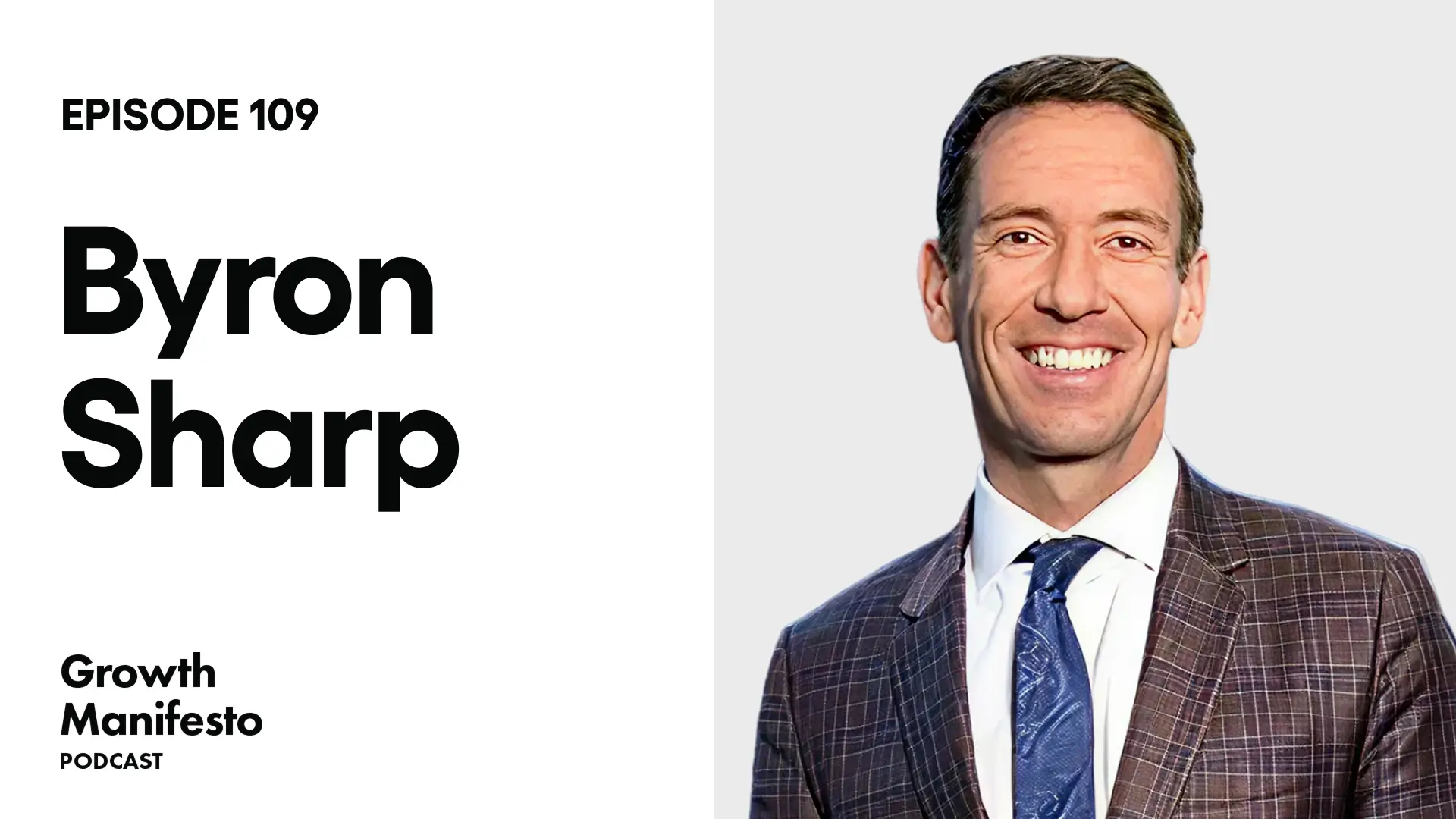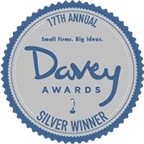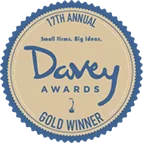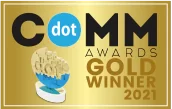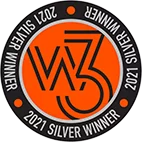How BigPanda became a $1.2B SaaS company
This episode is with Assaf Resnick – Founder and CEO at BigPanda, an AI Ops SaaS platform that recently raised $190M – valuing the company at $1.2B. In this episode we talk about Assaf Resnick’s journey from startup to billion dollar unicorn.
LINKS
—
You’re listening to The Growth Manifesto Podcast, a Zoom video series brought to you by Webprofits – a digital growth consultancy that helps global and national businesses attract, acquire, and retain customers through digital marketing.
Hosted by Alex Cleanthous.
- YouTube: https://www.youtube.com/c/GrowthManifestoPodcast
- Instagram: https://www.instagram.com/webprofits/
- LinkedIn: https://www.linkedin.com/company/web-profits/
- Facebook: https://www.facebook.com/Webprofits/
- Twitter: https://twitter.com/webprofits
- Agency: https://www.webprofits.io
SHOW NOTES
- 00:00:31 Assaf Resnick introduction
- 00:01:10 What is BigPanda?
- 00:04:59 The idea of BigPanda
- 00:06:02 How failure leads to growth
- 00:10:05 Transitioning to VC space
- 00:12:00 Assaf as a technically-minded founder or entrepreneurial founder
- 00:14:46 Hiring the right people for BigPanda
- 00:17:39 Acquiring first customers
- 00:20:55 When did you start spending money on advertising?
- 00:25:40 Handling self-doubts
- 00:29:29 How long should a person stick with something before they move on?
- 00:35:29 The effect of the pandemic
- 00:39:02 Content pillars as core strategy
- 00:41:47 Monitoring scape as the first content
- 00:46:14 Sustaining competitive edge and market positioning
- 00:50:12 If given a chance to do it over, what would you do differently?
TRANSCRIPT
Assaf Resnick:
So to get those first 10 customers, you have to meet a hundred customers and you’re going to get a lot of no’s and you’re going to hopefully learn from those no’s. So those first 10 customers are not an exercise in sales, they’re an exercise in product market discovery. And you can’t outsource that to sellers because the point is not to sell, the point is to listen and learn and adapt.
Alex Cleanthous:
Hello, this is Alex Cleanthous, and today we’re talking with Assaf Resnick, the CEO and founder at BigPanda. Now, BigPanda is an AIOps platform that recently raised $190 million, which valued the company at $1.2 billion. Today, we’ll be talking about how they built a billion dollar company in 10 years within the AIOps space and we’ll explain what that is shortly, for people who don’t know what that is. But first of all, hello and welcome, Assaf.
Assaf Resnick:
Thank you, Alex. Good to be here.
Alex Cleanthous:
Great to have you here. And such a great story because it’s been 10 years plus now, the company is now worth over a billion dollars. So now it all seems like everything had a plan, but that wasn’t always the case and I’m interested in talking about the journey. But first, just for the audience, could you quickly explain exactly what BigPanda does and who does it serve?
Assaf Resnick:
Sure.
Alex Cleanthous:
And what does AIOps mean? For the people that don’t know what that is.
Assaf Resnick:
Absolutely. So we are a software company, more specifically, we are a SaaS company, meaning we deliver our software as a service that does AIOps. And so AIOps is a fancy buzzword for, how do you use artificial intelligence and machine learning to scale a function called IT operations? And so what does that mean? IT operations is, folks typically at enterprises and large enterprises, but have to keep all of the IT infrastructure that powers business services running. So what does that mean? It means if I am an eCommerce platform and someone comes to buy my shoes online, there’s a whole data centre or cloud that makes that digital transaction possible. And that data centre has things like servers, and storage devices, and networks, and all these technical boxes and components that have to work together so that me as a customer from shoecompany.com can go online and have a really good digital transaction.
And today, every enterprise is a digital enterprise. So we buy our airline tickets digitally, we are doing this interview digitally, we educate our children digitally, we find groceries digitally, it’s a digital economy, more and more. Underpinning that is all of this infrastructure of servers and storage and networks and clouds, that’s keeping the digital economy running. Turns out that keeping the digital economy running, being the plumber for all of this digital infrastructure is really, really hard because the digital economy is growing, meaning the size of the infrastructure is growing, you just have more stuff that can break. Plus, as more and more enterprises are moving to the cloud, things are just getting even more complex and moving even faster. And so that’s good news because it lets companies innovate and do so with high velocity, but for the folks in ITOps, IT operations, whose job it is to keep all that stuff running, keep the lights on, that’s not good, it’s a big challenge because now they have lots more moving parts, more servers, more storage arrays, more networks, more applications.
And those things are moving faster and breaking faster and that’s creating this tsunami of data that people in ITOps, engineers, have to be able to consume and understand and react to and they just can’t keep up, they’re drowning in too much scale, too much data, too much velocity, too much change. And so we come and say, well, that’s a very applicable problem set for AI and machine learning. AI is a generic technology, is good at taking large sets of fuzzy and fast moving data and turning that into actionable insight and automation. And so we do that, we do it for a very specific use case called, how do you automate digital IT operations, and then that’s what we do.
Alex Cleanthous:
And you established this company back in 2011, 12, is that right?
Assaf Resnick:
2012, that’s right.
Alex Cleanthous:
- And so-
Assaf Resnick:
Yeah.
Alex Cleanthous:
… where did you get the idea for this? So what were you doing before you founded BigPanda?
Assaf Resnick:
Before I founded BigPanda, I was in a venture capitalist as a VC investing in early in mid-stage companies. And I left that venture capital to start a company called BigPanda, but it didn’t do what BigPanda does today. And the way that we got to what we do today is kind of scratching our own itch after having a monumental failure.
Alex Cleanthous:
I’ve got to ask you about the failure, I’ve got to, this is called The Growth Manifesto and for growth, most of growth is failing. This is what I always say, the success of a company, the success of an entrepreneur is fail, fail, fail, fail, fail, fail, fail and then if you hit something with all the failure, that’s what scales up. So what was the growth moment that started with failure?
Assaf Resnick:
Sure. And then even from there, it was not smooth sailing, I’m happy to talk about that. So it started with, we started this company, we do AIOps for IT today and we originally started the company with a very different direction, around how do you do AI for advertising online and how do you use AI to drive smart, targeted advertising, a light years away from what we do today. And we founded the company, we recruited our seed funding, we brought in early employees, very smart engineers and we spent a year going after this original idea of targeted online advertising. And after a year, we just hit a wall, it was clear that the direction we were taking wasn’t the right direction, for all sorts of reasons. And so we said, hey, well, what are we going to do? We’ve still got about half of our funding left from our regional seed round and we’ve got some really smart engineers, and there’s a good culture, we all like each other and what do we want to do?
And turns out that there was an itch that we’ve been scratching for ourselves that turned into the genesis of what we do today, which is, when you’re running online advertising, it’s a lot of people surfing the internet at any given moment and it’s serving those people ads, requires some pretty significant IT infrastructure. You got to build what’s called web scale infrastructure to be able to do things at a scale of hundreds of millions of concurrent users at any moment, so it’s performance intensive, latency intensive. And we had built a modern IT stack based on a lot of other startups do, with lots of clouds, and open source components, and SaaS components, and lots of different best of breed moving parts, which is how most people build a data centres today.
They don’t buy everything from HP or IBM, they pick the right tool for the right job. And so we had 20 different tools in 20 different environments and when something broke in our performance sensitive, latency sensitive environment, it is really important that we find to fix that problem quickly. But we had 20 different silos of our stack that didn’t talk to each other it was the Tower of Babel, and so it took us forever to find and fix the problem. So we ended up just hacking together some very basic software that could help us find and fix issues faster, no AI, no machine learning. And so after we hit a wall with the original business idea, we said, hey, here’s a pain that we’ve been fixing for ourselves and we were six or seven engineers and we were using the same tools and clouds as everyone else in the world, maybe everyone else in the world has this problem too, of how do you stitch together this Frankenstein of an IT infrastructure. And so that was the genesis of the idea, and that’s how we got started, through failure.
Alex Cleanthous:
Interesting, so it took you a year to figure out the thing that doesn’t work and then there was something that was happening on the side that became the main-
Assaf Resnick:
That’s right.
Alex Cleanthous:
… main product. And then from that point onwards, I’m sure that the sailing wasn’t smooth, but was the idea that sustained until today, is that right?
Assaf Resnick:
Yes. It’s we’re the same company with the same idea, it’s morphed and evolved, and certainly, it was not a straight line since then, but yeah, that was the genesis.
Alex Cleanthous:
So what’s interesting about this conversation with you is that you started in the venture capital space, most people start from a different space. So what was it like transitioning from the VC space, so you were looking at all the deals, to now, you were trying to raise the money? Was it easy because of the experience which you had and the connections which you had?
Assaf Resnick:
It’s a good question. It was very different, but I would pause it that raising money as a CEO is an important skill, but it’s number 13 on the list of important skills that you need. You know what I mean? So yeah, coming from venture for sure helped me understand the mind of venture capitalist and be able to pitch well and raise money and we’ve always done that well, and we’ve always been well capitalised to go realise our vision, but that can’t be your superpower as a CEO, that’s not enough.
Alex Cleanthous:
No, it’s definitely not enough, but it is helpful to know. It’s like when somebody has never actually interviewed somebody and then they get some motions or they start a company and they actually start to have to hire someone, and then they’re on the other side of the table, and then they do that about a hundred to 500 times. And then if they have to sit on to the other side of the table again, they’re going to be able to handle the interview in a very different way, because they’ve done it a hundred times before. So I’m sure that probably helped you a lot, but that’s not the focus of this conversation, it’s just interesting to think about. Quick one, because it sounds like such a technical business.
Assaf Resnick:
Yes.
Alex Cleanthous:
Your background, so are you a technical founder, a person that understands a tech or are you someone who’s an entrepreneurial founder, who can just pull together the people? Or are you just a hybrid of that?
Assaf Resnick:
Yeah. Well, so I’m not an engineer by trade, my father was a electrical engineer and a software programmer, and he always told me in high school that if I don’t go learn engineering, I’ll be homeless.
Alex Cleanthous:
That was a good parent.
Assaf Resnick:
Yes, so I went to go study business and history just out of spite. So no, not a technical co-founder, didn’t grow up in my career as an engineer, grew up more on the business side. But we’re running a business, this is a business and in the business, in this business, you have to be very user centric and customer centric and you have to have deep empathy and understanding of their world and their work and their pains and their aspirations. But you also need deep understanding of the ecosystem in which you operate and you have to have a deep understanding of how to sell and market and deliver. You have to be able to position your offering and deposition your competition. You have to know how to spot and hire really good executives and you have to know how to create a really cohesive team of executives that will be a first team and win together. You have to know how to build a great culture in the organisation.
And so yes, technical understanding, and more than technical understanding, user empathy is critical, critical, without it, nothing else matters. But there’s a lot of other ingredients that go into the soup.
Alex Cleanthous:
So when I hear you speak, it sounds like you put together everything in the beginning based on what you saw from pitches and what you saw was important to raise money. Now, what’s interesting is that you’re not the technical founder for a very technical space. There’s so many stories of non-technical founders starting a technical business and then just not succeeding. So how did you ensure that you hired the right person who could ship product, not who would get stuck in the weeds of, let’s go into this machine learning language for about six months, oh, that’s not the right one or this one. Because I’ve also had the experience where I hire some developers, obviously I didn’t have the right experience for it and I couldn’t talk their language and so when they had problems for me, I couldn’t tell them what to solve. So I think I missed a step in the chain of conversation and so how did you ensure that you had the right person or people that could actually ship product?
Assaf Resnick:
I did that by bringing on or partnering with a very good co-founder. So the first thing I did when I decided that, hey, I want to go be an entrepreneur, before I really had a concept of the pain I wanted to solve, was I want to go find a partner who can run this marathon with me and can create a shared vision for what we want to achieve together and then go execute on that vision. And that was the most fateful decision I made.
Alex Cleanthous:
And how did you do that? How did you find them?
Assaf Resnick:
The same way you find a spouse, is you meet a lot of people and you date and you have a vision of what you want in that checklist for your spouse and that checklist never materialises and you meet the person you need, not the person you thought you wanted and that’s it. I met a lot of potential co-founders, lots of VPs of R&D and CTOs, and was introduced to my co-founder via friend after meeting probably 50, 60, 70 others and it was a good fit.
Alex Cleanthous:
That’s great, that’s great. And it’s such a good approach because you are spending the time on trying to find the person that can help you to go along the journey, which is super, super important and it’s obviously succeeded now. And we’re going to talk to the journey that a bit more in a second but let’s talk now, in the course, so you transition now into now you say, the web advertising thing’s not going to work, but now there’s this solution we’ve got that can actually help to manage the infrastructure and to optimise that. Now, how did you start to get your first customers? So you had this idea now, you’re like, wow, this is a really good product now, I think there’s something here, let’s go test it out. How did you validate this was something that could scale up and this was something that there was a deep need for?
Assaf Resnick:
You’ve got to network your little hard out and get in front of as many potential users and as many potential customers as you possibly can and just validate and iterate and experiment and do it again and again and again, and the more people you can get in front of, the better. Eventually, a few of those folks were interested enough to be design partners with us, so we were fortunate enough to have some nice design partners. And then some of those design partners turned into early customers, paying us very, very, very little. But once we had that, we were able to turn that into a series A that gave us the next milestone in funding, then you can start bringing on a few more. Your initial sales and marketing resources or people, to start getting the word out, start getting the service area of conversations you can have with the potential market to get bigger, then we started bringing on the initial cohort of customers who were not design partners and then it goes from there.
Alex Cleanthous:
So sounds like you needed to do a lot of the groundwork yourself until you hit the series A, and so it was all about the case studies and the stories and the pain points, is that correct? And then it was…
Assaf Resnick:
Yeah, it is because in the first handful of customers, it’s called the 10 customers, you’re not selling in order to generate revenue, you’re selling in order to generate feedback about what’s working and what’s not working. And so to get those first 10 customers, you have to meet a hundred customers, and you’re going to get a lot of nos, and you’re going to hopefully learn from those. And so those first 10 customers are not an exercise in sales, they’re an exercise in product market discovery. And you can’t outsource that to sellers because the point is not to sell, the point is to listen and learn and adapt.
Alex Cleanthous:
And so once you did that, that got you to the point is where there was something to scale, which is where the series A started and then from there, you hired. Yeah, so you basically hired sales and marketing, right?
Assaf Resnick:
That’s right.
Alex Cleanthous:
How long within the journey until you started to actually advertise and market? Because I’m assuming the first stage was, it started off like a sales led, because that’s how the majority of SaaS companies start, it’s sales led, it’s talking to people, at what stage or what a year did you start actually spending money on marketing advertising?
Assaf Resnick:
I’d say the year was, so let’s say we pivoted the company in 2013 to the AIOp space, we didn’t call it AIOps at the time, that wasn’t a thing. And then I’d say it took us two years to build our first product and take it to market. So in 2015 we released the offering, 2015 we had, before we had any revenue, any offer to release, I remember we got an acquisition offer to buy the company and me and my co-founder-
Alex Cleanthous:
That’s a good sign.
Assaf Resnick:
Yeah, yeah. And me and my co-founder, we made a life changing amount of money and we decided not to sell the company because we thought that there was a bigger opportunity and so we said no. And we were really proud of ourselves and macho and banging our chest that we said, no, we didn’t sell out. And then we released the offering, and did a little bit of marketing as well, some press release and stuff like that and crickets for almost, I’d say a year and a half to two years. After we released the offering, some fish were nibbling and we were doing okay but far from good, and certainly far from great. And only in 2017 did the market really started to take off and that’s when also we expanded on sales and marketing. And we didn’t realise at the time, what I know now to be true, which was our timing was off, our market timing was off. We were at the right product, at the wrong time.
Because we were coming in 2015 and 2016, we’re coming to enterprises and saying, hey, you’re moving to the cloud, you’re going to have a hard time keeping your operations effective in this brave new world of the cloud and we are here to help. And what we heard back was, hey, that’s very interesting but right now, with the cloud, we’re still experimenting with cloud, 99% of our stuff is in traditional data centres. And we see the public cloud and we love the future there, but we’re experimenting, we haven’t put our mission critical assets in those clouds. And so we don’t really have the pain that you’re talking about and if we do, we’ll call you. And only in 2017, did they start calling us, in 2017 was I think when we saw this tipping point in the market of enterprise adoption of cloud, that’s when they started putting their most important services in the cloud.
And then they started waking up to, oh, managing this stuff is really hard in the cloud, I need help. And so it took us five years of first the initial pivot and then just pushing that ball up the hill to be at the right place at the right time.
Alex Cleanthous:
Pre-revenue, right?
Assaf Resnick:
And that’s when we started…
Alex Cleanthous:
That pre-revenue for five years?
Assaf Resnick:
It wasn’t pre-revenue, we were $2, $3 million in sales, so not completely pre-revenue, but not…
Alex Cleanthous:
Not today.
Assaf Resnick:
Not crushing it.
Alex Cleanthous:
Not today.
Assaf Resnick:
No, no, no. Not today, and even yesterday. Even at the time, you were under the weight of, hey, this is really hard and it’s not taking off as well as it should be, and why.
Alex Cleanthous:
What did you say to yourself, you know when you turned down that the life changing offer, with you and your co-founder, and then there were crickets for two years, what things were going through your head at the time? Because these are the times in life where self discovery happens when you are looking, questioning the decisions which you make in life. And the good news is, it’s turned out well, but just for that period, that’s a long time to have those questions. And so what were you thinking and how did you handle that period in time?
Assaf Resnick:
Those were, like you see a lot of entrepreneurs and the technology writers talk about self doubt and dark moments where things are looking very, very bleak and you hear things around. The per capita instances of depression in, entrepreneurs and CEOs is orders of magnitude and I don’t know, but heads and tails more than a common population and sounds like that and you realise why, because you’re under pressure and everyone’s looking at you. Employees are looking at you, investors are looking at you, your spouse is looking at you and most of all, you’re looking at yourself and so much of your identity and self worth is wrapped up into this venture that you’re leading, because this isn’t a job, a nine to five job, it’s so much of your identity is wrapped up this thing. And so it’s hard, it’s very hard when things are going bad and going bad for a long sustained period of time, it’s hard.
And there’s definitely self doubt and self criticism that come and a lot of people don’t survive that, they just say, hey, why am I doing this? Why do I need this? I can go have a job and take this stress out of my life, take this uncertainty out of my head. And there are definitely moments where I came home and told my wife, why didn’t I sell that company? What was I thinking? And then you get to a certain point where you say to yourself, look, I’m driving down the highway, I keep looking at the wall, I’m going to hit the wall, the only way I’m going to make this is, look at the road ahead, start driving. And yeah, the wall’s there, but I can’t keep looking at that otherwise that’s failure guaranteed. I might not make it this way, I’m certainly not going to make it that way. And so yeah, you with time, you just learn to live with the self doubt and the self criticism and just move forward, you get stronger, you don’t give up.
Alex Cleanthous:
And there’s a tonne of SaaS startups out there, there’s a tonne of startups out there, there’s a tonne of people, and it’s probably the majority of people, the majority of entrepreneurs, actually, they don’t succeed, it’s the majority of things actually just don’t succeed. You stuck with it for years and years and years, how long would you suggest somebody sticks at something for? No, because this is the big thing, because people can’t pay rent sometimes, can’t eat, they can’t pay the mortgage, they got their kids in school and they said, I’m going to start this entrepreneurial path or they’re young and they think, hey, look, I’m going to start this thing and it just doesn’t happen as fast as what you think ever and that’s just the thing. That’s the experience I’ve got in business, everything takes about 10 times as long. But what would you say to people, how long should you stick at something before you say, hey, there’s not something here or how should people think about it?
Especially to the founders and the people that are still struggling, still basically so in the grind, still trying to hit that scale point, so what would you say to them?
Assaf Resnick:
Yeah, oh man. I’d say a lot to them. First of all, there is no formula, obviously and the answer is extremely, extremely subjective. It’s not a math equation, but there’s a few ways to think about it I’d say and you got to layer on these different ways of thinking about it together, they’re not an isolation. So one is, hey, how do I be as dispassionate as I can about the opportunity that I see? So pretend that you haven’t invested the last three or four years of your life here and that your self worth is wrapped up into this thing and so is your reputation. And you’re an outside spectator, and you’re looking in the business and you say, well, does this business still make sense? And does it, knowing what I know now, would I start this company again? And do I think that there is a future?
Like so for us with the advertising technology, one year into it, I’m looking around, I’m saying, this doesn’t make sense, that all these things that I thought were true are not true, and I’ve learned a bunch of other things that didn’t even think about. And for all these reasons, I just don’t think we can build a big company here. And I probably dragged my feet for six months longer than I should have because of emotion and shame of failure and it’s just really easy to lie to yourself, really, really, really easy to lie to yourself. And so you want to be as dispassionate as you can on the one hand. You want to understand, is there a huge market here? When we said, when things were tough for us with this company, with the new iteration in AIOps, there was always for me, hey, the market size is huge and the pain is real and so if someone can solve this, it’s going to build something really, really big and I want to be the guy to go do that.
Not sure I know how to do it, I’m not doing it at the moment, but I see what it can become. So that’s one aspect, that you want to make sure that you’re not lying to yourself around what you have. There’s a lot to be said for not quitting and not giving up and are you thinking of quitting because you’ve taken a dispassionate look and you just don’t see a good path to success or are you doing it because you want the pain to stop? And you want the self doubt, and the stress, and the sleepless nights, and all that to stop? And so that’s a different thing, that’s a more emotional decision. And even there, there’s no right or wrong answers, you ask a lot of the most successful entrepreneurs, what was your secret to your success? And they’ll probably say something including, I didn’t quit when shit got hard and none of these success stories had it easy, everyone had to drag themselves through a field of glass, that’s just how it is.
Alex Cleanthous:
Yeah, I always say that the trait of a successful entrepreneur is their ability to take sustained pain for years because it’s literally just solving problems. And how long was it until the business was “successful”, it’s just like, oh cool, it’s finally happening now. You know what I mean? It’s not the two, three meal, which is better than zero to be clear, but it’s like, all right now, ah, now we’ve got good problems.
Assaf Resnick:
Now we’re on it, now we’re cooking. Yeah. So I’d say that 2017 was when we’re five years into it, 2017 comes and you start seeing, pick your metaphor, shoot coming out of the ground or initial signs of oil or whatever you want. That’s when things started say, that’s when the wind started shifting and we said, hey, we think that something’s going on. And in 2018 was, hey, this is really picking up. And then 2019 I think was when we said, hey, okay, there’s something real here, this is happening. And 2020 came along with COVID and changed the topic but I’d say it took us probably two years since 2017 for that tipping point to really solidify into, okay, the whole world’s moving cloud and this trickle is now aflood.
Alex Cleanthous:
And so in 2021, your sales grew by 155%, with the fourth quarter that set the record for the number of customers added in a single quarter. What happened in that quarter? So now we’re talking, what are you? Nine years in and now it’s starting that hockey stick acquisition thing, so what happened in 2021? Yes, was it because of the pandemic, everyone was in the cloud, is that what was happening or the transition? Or was happening or was it some other factors that just hit a point in the business where it was just-
Assaf Resnick:
Yeah, I think it’s more the latter. If you think of the pandemic, I think there’s three groups in the pan, three types of businesses visibly in the pandemic. Folks that just got a turbocharge from the pandemic, so think of Zoom or all sorts of digital services and entertainment. Then there’s folks that got absolutely crushed by that pandemic, so anyone having anything to do with travel or retail or any kind of physical business, well, the physical world was closed for a long time. And then there’s everyone in the middle, we were in the middle. So because we ride on a long term trend, which is enterprises are moving to the cloud, that’s going to be a 30 to 40 year journey and it’s going to have multiple economic cycles on that journey and multiple world changing events like COVID.
But it’s going to keep trucking, people aren’t going to stop moving into cloud, just the tectonic plates are shifting. And so it probably on whole was an accelerator because the pandemic accelerated digital penetration of our economy. We used to go shopping at the grocery store, now I get that stuff delivered. I used to do have meetings in person, now I do them over Zoom. And so digital services just became overnight, 10 X more velocity in terms of penetrating the way into our lives and digital infrastructure underpinning that wasn’t getting any easier to run. And that net, it was a good thing for our business, but the real acceleration came from just, we started maturing more and more as a business. And you bring on executives, you build teams, you build capabilities, you add muscle to the organisation and you get bigger and bigger and bigger, so it’s just natural evolution of the market and the company. No one crazy thing happened and suddenly everything’s different.
Alex Cleanthous:
Yeah, sure. Especially because enterprises, they do move slower generally and they do have a lot of money to sustain economic cycles oftentimes, which is interesting. Quick tactical question, because I was looking at the website and the marketing and so on, and you’ve got this content hub, which is something special. You’ve got the Hard NOC Life, NOC actually stands for something in the space. You’ve got the big Panda does, you’ve got the university, you’ve got case studies, you’ve got the webinars, you’ve got the ITOps pulse magazine, you invest massively in content, how important is content? Okay, so I assume that content is super important because you’ve got pillars, upon pillars, upon pillars of content, is this a core strategy for you to engage over the long term just with your customers or your potential customers?
Assaf Resnick:
Yeah, absolutely. You have to keep in mind that we are innovating a new category of how do you use AI to automate operations? That category’s never been around and so you have to do a lot of evangelism and though leadership. Because if you’re selling into an existing category, which is, hey, I’ve got a new flavour of ice cream, well, everyone already knows what ice cream is and why it’s tasty and delicious and why they want to buy it. But when you’re building something brand new, you got to invest a lot more, first in articulating to people that they have this pain, that’s first and foremost. Is part of category creation is, evangelising the pain, because imagine before there was aspirin or Tylenol and you had to articulate people, hey, you’ve got this pain back here in your neck, that’s called a headache and we’ve got the headache medicine.
And so they knew they got it, but you have to articulate because it’s like the frog in the frying pan, where they’ve just been living like this forever, firefighting all day long in ITOps and going from one crisis to another, that it just is the status quo, you don’t even know like, wait, it doesn’t have to be this way. The way things are today, they’re fundamentally broken and so you have to educate folks about the problem and then obviously educate them about your vision for what this solution can be. Which is, hey, there’s this thing called AIOps AI and not only can AI drive your car, if you have a Tesla, and help you find great things to buy on Amazon, but it can also automate a lot of your enterprise workloads, including IT operations can help you run your most mission critical operations.
And if you do that, you’re going to save a lot of money and you’re going to be able to run a lot faster and you’re going to be able to make your customers happier. And so you have to evangelise and certainly content marketing and thought leadership plays a huge, huge part of that.
Alex Cleanthous:
And so what was the first content play that you did? Because you’ve got, I think around eight streams now, what was the first one? What was the first one you said, okay, we need to engage, we’re going to start creating content, we’re going to do X? So what was X?
Assaf Resnick:
So I think X was something called the Monitoringscape, which is a playoff to the word landscape, and touches on the problem that we solved. One of the problems we solved for is, it’s a best of breed world today, no one’s buying all of their stuff, like we said before, from one vendor, no one’s buying everything from IBM or HP. We’re buying 257 different tools from 257 different vendors and now they’ve got this fragmented fruit salad where nothing speaks to each other and it’s complex and people have to connect the dots. And so, one of the first things we did was we created this thing called the Monitoringscape, which basically mapped out the different core segments that have to do with IT operations, things like observability and monitoring and others. And we mapped out who are the top 200 vendors in that ecosystem and we help people take an ecosystem which is very proud and very hard to understand and map it out in ways that were very, very useful to practitioners that were also happened to be our customers.
And so that was our first, I’d say content marketing motion and it was very, very successful, help us get a lot. It wasn’t that it was advertising what we were doing, but it was adding thoughtful and valuable insight to our customers.
Alex Cleanthous:
And integrating with what you’re doing? Like in-
Assaf Resnick:
Yes. And being very close to what we’re doing.
Alex Cleanthous:
Very close, yeah. This is great, this is great. I am jumping around, but this is all about the story of BigPanda and I really appreciate the sharing so far. So it’s a billion dollar company now, so now I’m sure that you have all the accolades of like, congratulations, now the company’s worth over like a billion dollars. How has life changed since the company’s now just worth over $1 billion, it’s 1.2 billion, has life changed much? Has there been small people out of the woodwork or is it all the same? So what’s life these days like?
Assaf Resnick:
No, it’s pretty much the same. I’d say the one thing that changed is appetite, with success comes appetite. And when I started the company, getting to a billion dollars felt like an unachievable vision and now it’s, hey, it’s a lot of companies that need help, there’s a lot of folks in ITOps that need help and we’re the market leader today that can go do that. And we can build a very, very, very large company by doing those things and so the appetite to go do something meaningful is definitely grown for sure.
Alex Cleanthous:
So the confidence right?
Assaf Resnick:
$1 billion is just a milestone.
Alex Cleanthous:
Yeah. And so the belief is the biggest one, right? So the belief is the biggest. And this is a quick one I want to touch on as well and I think they talk about it basically in the STAR principle, is that you want to be the number one company in a market that is growing at least at 10% a year. That’s you, right. So now how are you, because you already have the first move of advantage now, and there’s a lot of things which you have, which are hard to catch up with, how are you thinking about sustaining that competitive edge? Because I’m sure because of your success, there’s a tonne of competitors now going, I can do AIOps. How hard’s that? Because all entrepreneurs, they’re very confident, you know what I mean? Everyone’s like, I can do that, but how are you thinking about sustaining that competitive advantage? Know that are the market position.
Assaf Resnick:
Sure. Yeah, there’s no one silver bullet. So typically things break up around, things you’re doing on the product and technology and then things you’re doing on the go to market motion and there’s things that need to be done on both fronts. So on the product, the technology side, it’s making sure that it starts with understanding what are the key areas that I have to be really, really good at over the next four to five years in order to expand my market dominance. And so spending time with customers and your team and everyone who’s in the field selling and delivering, supporting customers. And taking all their insights and being just as clear as you can around, okay, what are the small handful of areas where as I go through the craziness of life and I get pulled in, the company gets pulled in a million different directions, where are the areas we cannot lose sight of?
And for us, it’s around maintaining our leadership in AI, it’s around maintaining our leadership and being this connective tissue across this very fragmented best of breed stack, it’s being fast and easy for our customers to try and buy and use and it’s making sure that we are not continuing to invest in those areas, making smart decisions to expand the moat around our business, continue to delight our customers and just stay focused is one. With that, comes an expansion of the size of your R&D team and your product team, and be able to increase the velocity of your innovation and your growth. And on the other side, it’s the go to market and there it’s, how do I take more share of the market faster? There’s 50,000 large enterprises out there that are all moving to the cloud and how do you get to those folks quicker and own those relationships? And how do you do that with the mix of sales and partnerships and different paths to market? How do I do that with smart marketing?
How do I evolve my marketing to reach different audiences? So it’s a multi-pronged strategy, once you’ve taken Normandy and you’ve created as a beach, hey, well now you got to go take Europe and that’s a multi-dimensional campaign.
Alex Cleanthous:
Yeah. How’s the pressure these days now that the company’s worth so much? How does it compare to back in 2017 when it was just at that crux point? Because now it’s a different type of pressure, right?
Assaf Resnick:
Yeah, it’s so much more enjoyable type of pressure. Then, until you have product market fit, it’s a very existential pressure, which is, am I going to live or am I going to die? So it’s very binary and here it’s, hey, there’s momentum happening, there’s success happening and okay, I’m driving the car and how do I optimise and how do I get bigger? But it’s offence, not defence and it’s a lot of fun to play offence.
Alex Cleanthous:
And so then, there’s one or two final questions. If you had your time over, is there anything which you would do differently in the journey?
Assaf Resnick:
Oh yeah, I’ve got a book. I’m just a very different person than I was 10 years ago when I started this company, I’ve learned a lot of things, mostly the hard way. And I started the company, I never managed a single person in my life and had to learn what being a great leader means and being a book manager. And so that took a long time and yeah, million different things I’d do differently.
Alex Cleanthous:
Well, that is refreshingly honest, because often people say, no, I would do everything the same. It’s like, really? I think literally it’s about 10 years of mistakes. So I would do all those mistakes the right way the first time, but you can’t often do that. To become a good leader, you have to be a bad leader first, just to become fantastic at anything, starts with you not being that good at it, it is not possible to just be good at something, is it? I wish it was.
Assaf Resnick:
Maybe some people are born perfect, I was not, I was not one of them.
Alex Cleanthous:
Yeah, great. And so for the people that are listening, who are working at an enterprise that think, hey, this BigPanda thing sounds pretty interesting, so what companies are ideal and what’s the process of engaging with BigPanda?
Assaf Resnick:
Sure. The ideal customer is typically a enterprise, not a startup, but someone who’s got problems of scale of their IT infrastructure and their cloud infrastructure, they’re having a difficult time managing problems in their data centres or their cloud environments, they’re doing incident management and they’re just find themselves firefighting all the time or having to hire more and more people to help fire fight or their best engineers that you want to be out there developing code and innovating new products are getting pulled into firefighting all the time. So if that’s you, give us a ring. And it’s very easy to find us, just go to bigpanda.io, our website, and there’s plenty of ways you can reach out to us.
Alex Cleanthous:
Assaf, thank you for coming on the podcast and sharing your story. It’s such a great story, I congratulate you so much, and it’s really easy to congratulate someone after 11 years in business. Congratulations for sticking the path and for creating something that is significant, it’s an amazing story, I thank you for sharing it and I hope this has been inspiring for all similar founders and startup entrepreneurs out there that are going through some of the challenges that we spoke about. So thank you so much for sharing your story on the podcast today.
Assaf Resnick:
Thank you for having me, Alex.
Alex Cleanthous:
Thanks for listening to the Growth Manifesto podcast. If you enjoyed the episode, please give us a five star rating on iTunes. For more episodes, please visit growthmanifesto.com/podcast. And if you need help driving growth for your company, please get in touch with us at webprofits.io.
Now that you’re here…
Why not take a few minutes to see how Webprofits can help you achieve your growth aspirations?
We helped one company grow from $25M to $190M revenue in 4 years, and we work with challenger brands that want to make a serious impact in their industry and have the resources (and the will) to make it happen.
If you want a growth strategy that leads the way in your industry, find out how Webprofits can help you transform your digital marketing.
See what we can do


